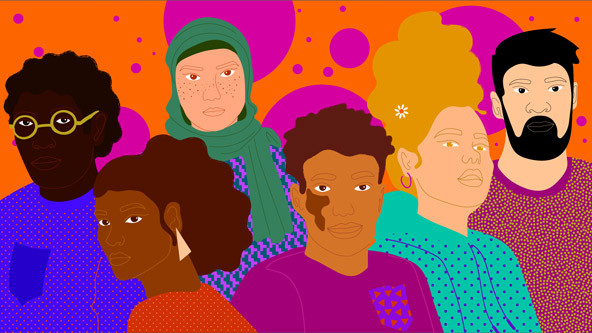
SSIR is no longer accepting submissions for this series.
Since its founding in 2003, Stanford Social Innovation Review (SSIR) has emerged as the preeminent publication for people engaged in social innovation. We publish authoritative, cutting-edge thinking on issues facing leaders of nonprofits, foundations, businesses, and government agencies.
SSIR is based at the Center on Philanthropy and Civil Society at Stanford University in Silicon Valley, but it is written for a global audience. We cover a wide range of topics, including social entrepreneurship, nonprofit management, and philanthropic strategies, as well as educational reform, poverty alleviation, and environmental protection.
For our second DEI series, which is no longer open to submissions, we will build upon the theme of the first, which set out to “analyze DEI work through a global intersectional race lens.”
Are you enjoying this article? Read more like this, plus SSIR's full archive of content, when you subscribe.
Our most successful article of the series, “The Bias of ‘Professionalism’ Standards” (which more than 100,000 people have read), indicated that our readers crave discussions about the hard problems, about the complex, untidy issues that make some people—white people, people in charge, leadership—uncomfortable.
This fact was magnified this year by the very graphic police killing of George Floyd. People—white people—could not ignore the nearly nine-minute video of his slow, torturous murder. They could not ignore the story of Breonna Taylor, a black woman murdered by the police in the middle of the night while she slept in her bed. Or the story of Elijah McClain, the young black man who was arrested for “looking suspicious” and begged the police not to kill him, explaining that he is “an introvert and different” in his final words.
We can no longer ignore the racial bias and discrimination that permeates all aspects of our society. And while we at SSIR are focused on producing cross-sector, evidence-based solutions for our audience, we realize that there are complications in overlooking or glossing over the problems in order to home in on solutions.
Namely, there is often time little buy-in or investment by the very people who need to change—who need to see, in order to understand, that racial bias and discrimination exist in many forms, system-wide.
If white people do not believe that racism is their problem — they do not believe that they need to give their time and energy to creating solutions. They do not feel like they are an essential part of the solution, or that they need to do the work to make that solution effective. Push back, backlash, dismissal — these are the consequences of not showing people what racism looks like.
So, in this series, we intend to show what racism looks like. Instead of putting the cart before the horse, instead of zeroing in on what can often be superficial “DEI” solutions, it is time to show our readers the many ways that racism manifests within organizations and the workplace, especially in this COVID-19 world. Making these stories visible is the first step to seeing and then taking responsibility for the history of racism manifest in the systems and institutions in which we live and work.
This open call for our next series is for articles that demonstrate how racism operates within an organizational structure. These articles can be presented in a variety of forms: as an anonymous, personal account of how an individual experienced racism within their organization; or an article that examines a mainstream example of workplace racism, textured with research and data, to illustrate how this experience is not unique but systemic.
Some questions that may be considered are: What does racism looks like in an all-digital, remote workplace? How do organizational practices enable or entrench racism?
While not essential, articles should endeavor to include research-based scaffolding and conclude with pathways forward for creating organizations that value belonging, dignity, and justice. In this way, the series not only endeavors top provide SSIR readers with evidence of what racism looks like within organizations but how those issues were addressed and resolved, if at all.
Please submit an article between 1,000 and 2,000 words, using the form below, by February 28, 2021. It is required to include a Microsoft Word .docx file version of your article draft. If you are unable to see the form below, please visit it directly at https://airtable.com/shrNwfsfGP9NC4Pvo. Please do not submit executive summaries or advertorials. Hyperlink source material in the body of the text in your Word document. If you lack Microsoft Word, LibreOffice and Google Docs are free and can export .docx files. In your Word document, please include a headline and a one-sentence synopsis of your article.
Writers will be contacted by Friday, March 12, 2021, if their submission has been accepted for publication online. If their submission is accepted, writers will be asked to go through an editing process and sign a contract assigning copyright to Stanford University, prior to receiving a $500 payment for their article.
Anyone is eligible to submit an entry. We are, to be clear, specifically seeking submissions which document experiences of racism in the workplace.
The series will run weekly beginning in April 2021.
Photo by iStock/CreativeNature_nl.
Support SSIR’s coverage of cross-sector solutions to global challenges.
Help us further the reach of innovative ideas. Donate today.
Read more stories by SSIR Editors.

